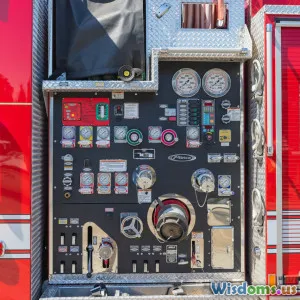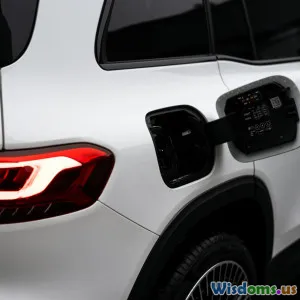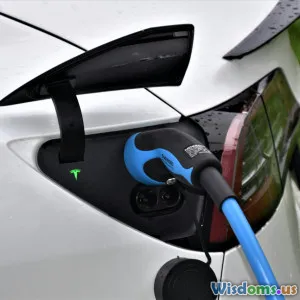
Emergency Response Technologies in Vehicles
7 min read Explore cutting-edge emergency response technologies in vehicles revolutionizing road safety and saving lives worldwide. (0 Reviews)
Emergency Response Technologies in Vehicles: Revolutionizing Road Safety
In an age where every second counts during emergencies, innovations in vehicle technology have taken a transformative leap. Picture this: a collision occurs, and before the driver even regains composure, the vehicle has already alerted emergency responders, sharing location data and crash severity. This seamless integration of technology is no longer a futuristic fantasy — it is pivotal in saving lives on roads worldwide.
The intertwining of emergency response systems with vehicular technology promises to redefine safety standards. From real-time accident detection to AI-powered assistance, these innovations offer a lifeline when unforeseen incidents occur, ensuring rapid intervention and reducing casualties.
The Imperative for Emergency Response Technologies
Globally, road traffic accidents claim over 1.3 million lives each year, according to the World Health Organization. Delays in medical response exacerbate injuries, making quick emergency notifications crucial. Traditional reporting methods rely on eyewitnesses or severely injured occupants, leading to precious time lost. Vehicle-embedded emergency response technologies aim to bridge this gap by automatically initiating notifications and assistance the moment a crash or hazard is detected.
Core Technologies Shaping Emergency Responses
Automatic Crash Detection and Notification (ACDN)
One of the cornerstone technologies is Automatic Crash Detection, integrated into many modern vehicles through telematics systems and sensors.
- How it works: Accelerometers, gyroscopes, and impact sensors detect crash events, immediately activating emergency alerts.
- Real-world example: General Motors’ OnStar service can automatically detect a collision and notify 911 with vehicle location and crash data. Since its rollout, it has contributed to faster dispatch times and has been credited with saving hundreds of lives.
Advanced Driver Assistance Systems (ADAS)
ADAS encompass technologies designed to either prevent accidents or minimize their impact.
- Adaptive cruise control and lane departure warnings help avoid collisions.
- Emergency braking systems act automatically when the system predicts an imminent crash.
- During or after an accident, systems can trigger emergency calls or alert nearby vehicles to prevent secondary collisions.
For example, Volvo’s City Safety system leverages radar and camera sensors to brake automatically if a pedestrian or vehicle suddenly appears in front.
E-Call Systems and Regulatory Advances
The European Union mandated all new cars include eCall (emergency call) systems from 2018, aiming to reduce emergency response times by up to 50% in rural areas.
- Upon detecting a serious crash, eCall automatically dials emergency services, transmitting location, time, and vehicle identification.
- A human operator can communicate with the vehicle occupants if possible.
This regulatory push reflects global acknowledgment of the technology's potential to save lives and streamline emergency response logistics.
Integration of AI and Machine Learning
Artificial intelligence is increasingly embedded in emergency technology to enhance accuracy and responsiveness.
- AI algorithms analyze sensor data to distinguish between false alarms (e.g., a pothole impact) and actual emergencies.
- Predictive analytics can issue warnings about potential hazards, like slippery roads or erratic surrounding behavior, reducing accident likelihood.
- Companies like Mobileye integrate AI-driven vision systems to provide 360-degree situational awareness.
Beyond Detection: Connected Vehicles and Emergency Ecosystems
Vehicle-to-Everything (V2X) Communication
Vehicles communicate with each other (V2V) and with infrastructure like traffic signals (V2I), enhancing situational awareness.
- In emergency events, V2X can broadcast warnings to nearby vehicles, giving drivers time to react.
- Emergency vehicles can use priority signaling to clear routes faster.
Emergency Medical Data Sharing
Integration with health data systems allows vehicles to transmit occupant medical data to responders.
- Advanced systems store critical health information, such as allergies, existing conditions, or medications, to be accessible during emergencies, elevating personalized care.
Drones and Remote Assistance
Some companies envision drones launched at accident sites via vehicle alerts to quickly assess the scene and relay critical video data to emergency crews, allowing better preparedness before arrival.
Challenges and Considerations
While promising, these technologies face hurdles:
- Privacy and Data Security: Ensuring sensitive data, including location and health records, is protected against cyber-attacks.
- Infrastructure Reliance: Technologies like eCall require reliable cellular networks, posing challenges in remote areas.
- Cost and Accessibility: Incorporating these technologies widely raises questions about affordability, particularly in low-income regions.
The Road Ahead: Future Trends
Advancements anticipate even deeper integration of emergency technologies:
- Fully autonomous emergency response: Self-driving cars that autonomously navigate to safety or hospitals.
- Wearable device synchronization: Linking vehicle systems with occupants’ wearables for better health monitoring.
- Global interoperability: Standardizing communication protocols to support international emergency responses.
Conclusion
Emergency response technologies in vehicles represent a pivotal shift toward proactive, connected, and intelligent automotive safety. As innovations like automatic collision detection, AI-driven assistance, and V2X communication mature, they herald a future where vehicles do more than transport—they protect.
By reducing response times and improving precision during critical incidents, these technologies not only save lives but also reduce injuries, healthcare burden, and related economic costs. For drivers and policymakers alike, investing in and promoting adoption of advanced emergency response systems is a step toward safer, smarter roads worldwide.
The next time you buckle up, remember: your vehicle might just be your first responder in disguise.
References:
- World Health Organization. "Global status report on road safety 2018."
- General Motors OnStar Data.
- European Commission on eCall regulations [https://ec.europa.eu/transport/themes/its/road/action_plan/vehicles/ecall_en]
- Volvo City Safety Technology Documentation.
- Mobileye AI-powered Safety Solutions.
Rate the Post
User Reviews
Popular Posts
















